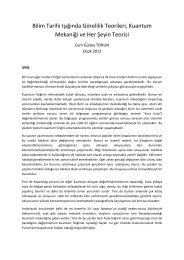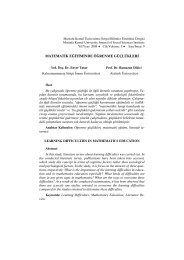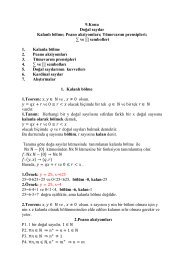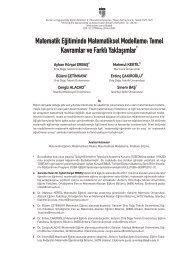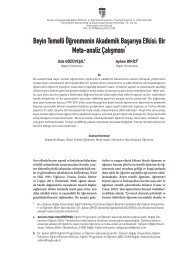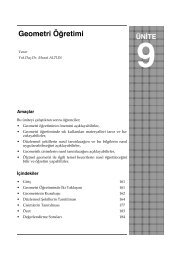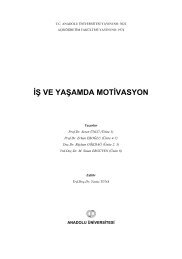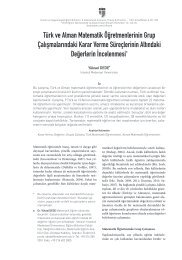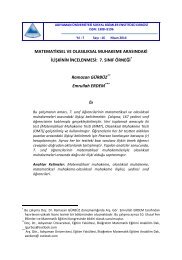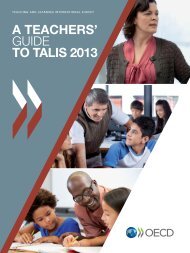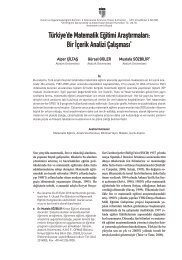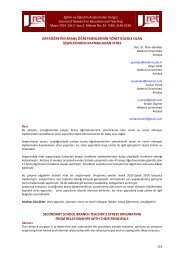Ufuk-U_niversitesi-SBE-Dergisi-S-ayı-5-kopya
Ufuk-U_niversitesi-SBE-Dergisi-S-ayı-5-kopya
Ufuk-U_niversitesi-SBE-Dergisi-S-ayı-5-kopya
You also want an ePaper? Increase the reach of your titles
YUMPU automatically turns print PDFs into web optimized ePapers that Google loves.
The findings indicate that multilingual students use more strategies more frequently thanbilinguals.Another study on the use of strategies by bilingual and multilingual learners wascarried out by Sung (2011) in which she aimed to examine the variables influencing Chineselanguage learners’ strategy use. The study was conducted on 134 language learners who wereenrolled in Chinese language classrooms in the USA. To analyze their strategies sheadministered the Strategy Inventory for Language Learning (SILL) of Oxford (1990). Thefindings revealed that those participants who had learning experience in Chinese lessfrequently used affective, social and metacognitive strategies than those who had noexperience. In addition, participants who acquired two or more foreign languages priorChinese indicated to frequently use metacognitive, social, affective and cognitive strategies;however, those participants who acquired one foreign language made less frequent use of theabove mentioned strategies.1.4. The effect of instructor’s native languageAlthough there are numerous studies on the impact of the instructor characteristics onlanguage learning (Kneipp et al. 2010), the perceptions about an issue (Demirli & Türel,2012; Saqlain, 2013; Wiebe & Kabata, 2010) or the problems they face (Öztürk, 2013) nonestudy has been found on the role of the instructor’s native language on the language learningstrategies. A study conducted by Sauders (2001) focused on the influence of instructor’snative language on learning and rating in economy classes. The findings of the study suggestno main effect of the instructor’s native language. In other words, students with a nativeEnglish speaking instructor scored similar to students who were taught by a non-nativeEnglish speaking instructor.In the light of these studies, this study aims to investigate the selection and frequencyof the subcategories of the language learning strategies based on the model of Oxford (1990)used by bilingual and multilingual preparatory school students. Divergent from Kemp’s(2007), Sung’s (2011), and Psaltou-Joycey and Kantaridou’s (2009) study, the present studyincludes Turkish language learners of English. Furthermore, its goal is to analyze whether adifference of language learning strategies can be found among students who were taught byinstructors who have the same native language as the students, Turkish, and students whowere taught by instructors who have a different native language, Spanish.62





